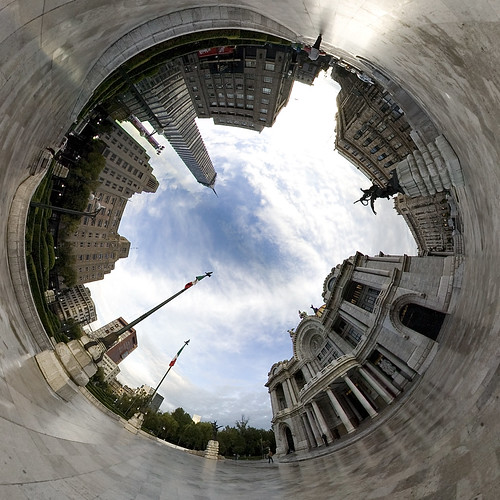Mexican SKY, originalmente cargada por Luis Montemayor.
The light from the sky is a result of the scattering of sunlight, which results in a light blue color perceived by the human eye. On a sunny day Rayleigh Scattering gives the sky a blue gradient — dark in the zenith, light near the horizon. Light that comes in from overhead encounters an air mass 1/38th of the mass that of a sunbeam coming along a horizon paths. So, fewer particles scatter the zenith sunbeam, and, therefore the light remains a darker blue.
The sky can turn a multitude of colors such as red, orange and yellow (especially near sunset or sunrise) and black at night. Scattering effects also partially polarize light from the sky.
Sky luminance distribution models have been recommended by the International Commission on Illumination (CIE) for the design of daylighting schemes. Recent developments relate to “all sky models” for modelling sky luminance under weather conditions ranging from clear sky to overcast.














No hay comentarios:
Publicar un comentario